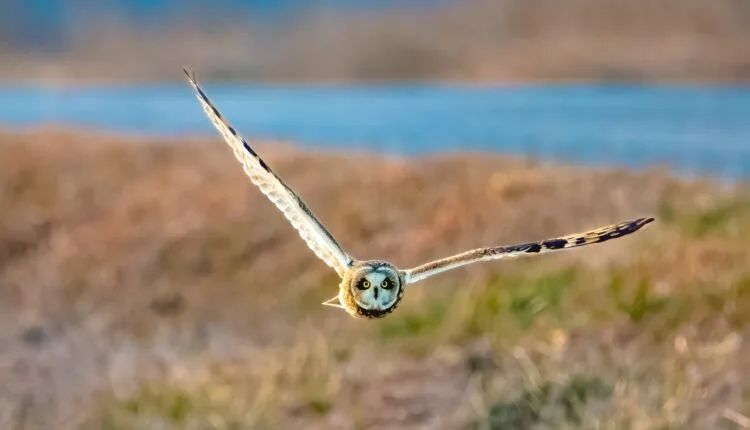
Photo courtesy of NASA HQ PHOTO/Flickr.
Two meteor showers light up Iowa’s November skies. Learn when and where to catch the Northern Taurids and Leonids’ celestial displays this month.
Get ready to witness nature’s own fireworks display, Iowa. As autumn settles in across the Hawkeye State, two spectacular meteor showers are preparing to illuminate our night skies.
The Southern and Northern Taurids—affectionately known as the “Halloween fireballs”—are set to peak in early November, offering Iowans a chance to catch some of the year’s most dramatic celestial shows. While these sister showers might not produce a high volume of meteors, they’re known for creating exceptionally bright, long-lasting fireballs that streak dramatically across the darkness.
For stargazers who’ve been disappointed by this year’s often cloudy conditions, November’s double feature might just make up for the wait.
When to watch
The Northern Taurids meteor shower will reach its peak on Tuesday, November 12, though the 70% full moon may dim the show somewhat. While the peak of the Southern Taurids has just passed, both meteor showers will remain visible into December, giving Iowans multiple opportunities to catch these celestial displays.

Photo courtesy of NASA/Bill Ingalls/Picryl.
What makes the Taurids special
While some meteor showers dazzle with quantity, the Taurids are known for quality.
“What’s notable is that they’re likely to produce brighter and longer-lasting meteors than some other showers, even if there aren’t as many,” explains Sally Brummel, planetarium manager at the University of Minnesota’s Bell Museum.
Under ideal conditions, viewers can expect about five meteors per hour—but these aren’t your average shooting stars. The Taurids are famous for producing dramatic fireballs that light up the night sky.
How to watch
For optimal viewing, find a location away from city lights with an unobstructed view of the night sky.
The best viewing hours are between midnight and predawn—pack warm clothes, a reclining chair or blanket, and plenty of patience.
Pro tip: put the phone away. Your eyes need about 20-30 minutes to fully adapt to the darkness, and checking your bright screen will reset this adjustment period.
Double feature: The Leonids arrive
Just as the Taurids begin to wind down, the Leonids meteor shower will take center stage. Running from November 3 through December 2, this cosmic display will peak in the early morning of November 17.
While the Leonids typically produce about 15 meteors per hour—more than the Taurids—this year’s show faces a challenging backdrop: a 95% full moon that may outshine fainter meteors. However, patient observers might still catch some impressive streaks across the sky.

Photo courtesy of Jim Vajda/Wikimedia Commons.
Best chances for success
Meteor showers don’t require any special equipment to view—just dark skies and patience.
For both the Northern Taurids and the Leonids this month, the key is to find a viewing spot well away from city lights. Once you’ve found your perfect dark sky location, simply lie flat on your back and look up, taking in as much of the sky as possible. Remember: these celestial shows are weather-dependent, so be prepared to adjust your viewing plans based on cloud cover.
Whether you catch a glimpse of the Taurids’ famous fireballs or the Leonids’ shooting stars, November’s meteor showers offer a perfect excuse to bundle up and explore Iowa’s night skies.
This article first appeared on Good Info News Wire and is republished here under a Creative Commons license.
This story was generated in part by AI and edited by Courier Newsroom staff.
READ MORE: Election fatigue? Here’s how to recharge your mental health

The 8 most underrated state parks in Iowa
Check out a list of some of the less-popular state parks in Iowa that still offer natural beauty and plenty of activities. Iowa’s 99 counties are...

It’s container garden season, Iowans! Here’s what to know
Container gardening in Iowa is a great option for those with limited space who still want to grow their own vegetables and flowers at home. Growing...

Uncover hidden gems: Iowa’s best state park views
Explore Iowa's state parks for breathtaking vistas, historic landmarks, and outdoor adventures from hiking to stargazing. Iowa's state parks offer a...

Iowa’s 10 most Instagram-worthy state parks
The Iowa DNR recently highlighted 10 state parks that get the most love on Instagram. Iowa's state parks are a natural draw for residents and...

6 awesome natural wonders in Iowa
Learn about six awe-inspiring natural wonders in Iowa, from a scenic byway to the Maquoketa Caves and more. Iowa is a naturally beautiful state....

The top wildlife refuge in the nation is right here in Iowa
In the heart of the Midwest lies a hidden gem that has just been crowned the top wildlife refuge in the entire nation. Yep—according to USA Today's...




